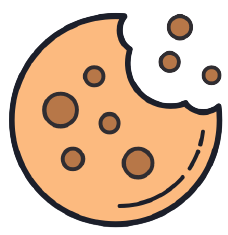We’ve come a long way from the time a man would begin his day by cutting firewood, completing his chores at home and then walking miles to work.
Today, the average forty-five year old man lives a “sedentary” life. After a quick shower he sits at the breakfast table, then rides in a comfortable car to his job — parking as close to the building as possible. He takes a n elevator to his office where he sits in an executive chair until noon. That’s when he gets back in his car and heads for a local cafe to the drive-through window of a fast-food restaurant for a hamburger and fries to eat at his desk back at the office. The rest of the afternoon he’s secure in his chair — on the phone, dictating or starting a computer screen.
At day’s end, he drives home, heads for the sofa and begins flicking through the television channels until his wife serves dinner — often delivered to the TV room. Then it’s back to channel-surfing until 11 pm news and bed time.
How many steps has this man walked in the average day? What has he done to elevate his heart rate? Where is the exercise?
DEGENERATION OF FITNESS:
If we applied a modern expression — “You’ve come a long way, baby” — to the issue of physical exercise in today’s ultra-convenient lifestyle, we wouldn’t be indicating a positive change — it would indicate a decline in fitness, And the decline just may be one of the factors that is killing Americans today!
Everywhere, because of a lack of intentional exertion, people are on the road to ruin — and don’t even know it!
How “out of shape” are today’s workers?
The decline in fitness and physical exercise began long before the days mentioned. We only need to look at early history to understand why being fit is essential. The Bible, for example, is filled with accounts of people who were spiritually — and physically strong.
Noah, who lived to be nine hundred fifty years old, must have been in excellent shape when, at the age of five hundred, he began to build the ark . He and his sons worked on the project for nearly one hundred years before the floods came. The ark was a huge undertaking. Its tonnage was equivalent to more than six hundred freight cars, which would form a train about four miles long. Historians note that one hundred fifty years ago there was no ship in the world as large as the ark. That’s what I call exercise!
Moses climbed Mount Sinai twice when God delivered His commandments. Then, at the age of one hundred twenty after walking through the wilderness for decades — Moses climbed Mount Nebo, a very high mountain as high as 7,000 feet.)
Samson was endowed with incredible strength — so powerful that when he was bound with ropes he broke them off like threads.
David was physically strong. He was constantly on the move — from the mountains to the wilderness — engaged in battle after battle.
Elijah, after his confrontation with the prophets on Mount Carmel, received a message from Jezebel that he was about to be killed, He went a day’s journey through treacherous territory.
Jesus was a carpenter and knew what physical work entailed. He also walked nearly everywhere He went. The journey from Nazareth to Jerusalem, for example is 75 miles. Once the Lord walked in the Judean wilderness for 40 days without food.
BENEFITS AND CONSEQUENCES:
There are wonderful primary benefits to a consistent exercise program: It increases the supply of oxygen to our tissues and cells and it reconditions the heart. Oxygen is the breath of life, yet many are receiving an inadequate supply. In fact, a major cause of most degenerative disease and early aging is simply lack of oxygen to the cells.
“Wouldn’t you rather sow good seeds now through exercise than sit in a nursing home crippled with arthritis? DO you want to become so overweight that you don’t have enough oxygen and smother on your own fat with sleep apnea?”
The facts are beyond dispute. The quality of your life in later years depends on whether or not you exercise — and on the care you take to exercise correctly.
A WELL-CONDITIONED HEART:
Cardiovascular disease is the most common cause of death in the United States today. It is prevalent because we clog our arteries by eating the wrong foods, and we do not condition the heart through proper physical activity.
When we exercise, the lungs take in more air and the heart grows stronger. As a result, the heart is able to pump more blood with fewer heartbeats.
Why is this so important? A well-conditioned heart has about sixty beats per minute, but an unconditioned heart has eighty beats — or more — per minute.
If you put excessive mileage on your car, it won’t be long until the engine starts to sputter — and eventually fail. Just think of the consequences of adding ten million extra beats on your heart every year for twenty or thirty years. It’s not a pretty picture.
There’s another reason to condition your heart. The slower the pulse, the greater the blood flow in the coronary arteries.
Your heart and lungs are two organs that never take a break. They work when you’re sleeping and when you’re active — day and night, nonstop. So, when your heart is constantly pounding away at eighty beats a minute, it’s going to become tired.
Your heart, the size of your first, is supplied by two coronary arteries — right and left. The faster the heartbeat, the less blood (and oxygen) can flow through your coronary arteries. The opposite is also true. The slower the pulse, the greater the blood flow.
Here’s the most important fact of all. When the heart is beating, the blood can’t flow in the coronary arteries — it only flows between beats, when the heart is relaxed.
Visualize this: The longer the pause from beat to beat, the more blood is being supplied to the coronary arteries, which nourish the heart. The well-conditioned heart has a much longer rest period, so that more blood can flow to the heart muscle — thus making a healthier heart. Exercise enlarges the coronary arteries, adding to the blood flow.
CHELATION THERAPY:
There are about 170,000 heart-bypass surgeries per year in the United States at a cost of over two billion dollars.
If someone you love are a candidate for a bypass, look into the option of chelation therapy — a noninvasive method of removing toxic materials such as lead and cadmium.
NANOBACTX PRESCRIPTION:
The tiniest, “nano” -sized organism known to man is the nanobacteria, called NANOBACTERIUM SANGUINEUM, which is a blood bacteria. There are 20-200 nm in size and are described as the smallest known self-replicating organisms. Nanobacteria secrete a calcific coating around itself for protection, which creates problems when the organisms gather together and function as a unit or colony. We now understand that nanobacteria cause pathological calcification in heart disease, aortic and carotid plaque, coronary artery plaque and many other conditions.
There are lab tests that will reveal whether these Nanobacterium sanguineum antigens are involved in your heart problems. Once it is determined that you do indeed have a nano-bacterial infection, it is recommended that you use NanobacTX, a compounded prescription medication. It is the only nano-biotic scientifically designed to safely remove the calcification from around the calcified nano-bacteria, eliminating the bacteria. Additionally, NanobacTX is the only prescription treatment that may help to reverse coronary artery calcification.
EXERCISE:
What’s the best method of preventing arterial problems? Exercise. It can actually cause collateral arteries to form when the coronaries are becoming clogged with plaque. This creates a natural bypass around the plaque by building more blood cells.
But be sure that you have checked with your doctor before beginning any exercise program. Your heart is a muscle, and it must be conditioned gradually and consistently — like all your muscles — to reach its optimum peak performance. Don’t try to run a five-mile marathon tomorrow if you have been a couch potato for the last five years.
ALL ABOUT AEROBICS:
The word ‘AEROBIC’ means “with oxygen”. It is a form of exercise that includes brisk walking, swimming, rowing, cycling, aerobic dancing and jogging. Aerobic exercise is something you can do at either a gentle or brisk pace that increase your heart rate.
Here’s how to determine your training heart rate:
- Subtract your age from 220.
- Multiply that number by 65 percent, and then multiply that same number by 80 percent.
THIRTEEN BENEFITS:
Why should you add a daily workout to your schedule? Here are 13 benefits of aerobic exercises.
- It may raise your good cholesterol — the HDL.
- It may lower your blood pressure.
- It prevents blood clots.
- It reduces the dangers of diabetes.
- It promotes weight loss.
- It helps to raise the metabolic rate.
- It may decrease your appetite.
- It increases perspiration.
- It tones the muscles.
- It improves digestion and helps elimination function.
- It promotes a more restful sleep.
- It reduces stress and anxiety.
- It improves lymphatic flow.
THE DANGERS OF INACTIVITY:
- Depression and sluggishness.
- Bowels that become constipated.
- Soft and flabby muscles.
- Compromised digestion resulting in heartburn and indigestion.
- Poor memory retention and slowed reaction time.
- Decreased lung capacity.
- Increased heart rate, which may lead eventually to cardiovascular disease.
- Tissues and cells that receive inadequate oxygen, inviting cancer-causing conditions.





